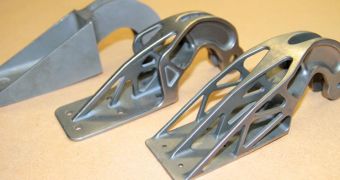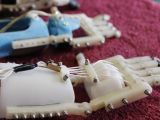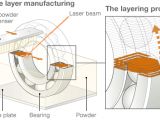3D printers may take ages to create even one figurine, but the time is getting shorter, and their ability to cope with tougher materials grows every day. It has grown so much, in fact, that scientists have deemed it proper to start using metal.
Metal usually has to be smelted and either poured in a mold or hammered into shape. Or chiseled/sculpted in the case of softer ones.
3D printing, on the other hand, superheats materials, rendering them fluid, then builds things after virtual 3D models, one drop/dot/layer at a time.
At an event held by the London Science Museum, the European Space Agency and its partners launched the AMAZE project.
AMAZE is a joint effort to bring 3D printing into the age of manufacturing metal parts. That is why it is called AMAZE after all: Additive Manufacturing Aiming Towards Zero Waste & Efficient Production of High-Tech Metal Products.
We suppose that AMATZWEPHMP would have been too bizarre a moniker for the invention.
At the event, it was demonstrated that it is, indeed, possible for metals to be used in 3D printing.
In fact, the event included a demo of components made from tungsten alloy, which can withstand 3000 degrees Celsius (hence its use in spacecraft and nuclear fusion reactors).
3D printing can also allow for more complex shapes to be created, removing the limits of normal metal casings. Lighter, more efficient plane parts could save fuel, for example.
The exhibition at the London Science Museum also includes 3D printed replacement body parts (though no 3D printed organs yet), an open-source mechanical hand, intricate sculptural work, etc. The exhibit will be open until July 2014.
Here is what the process entails:
- a computer-aided design software determines shape of 3D model using cross-sections - laser etches the shape of cross-section into metal powder and heats it so that it solidifies and creates a solid layer - more powder is spread to create the next layer and so on until the 3D object is created - interlocking structures are created by leaving one non-solid layer in between.

 14 DAY TRIAL //
14 DAY TRIAL // 

